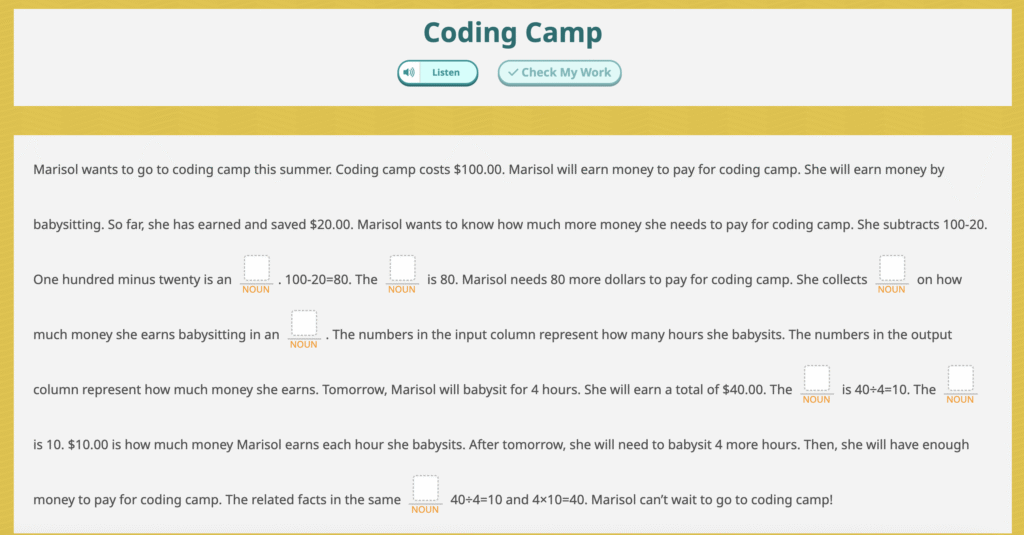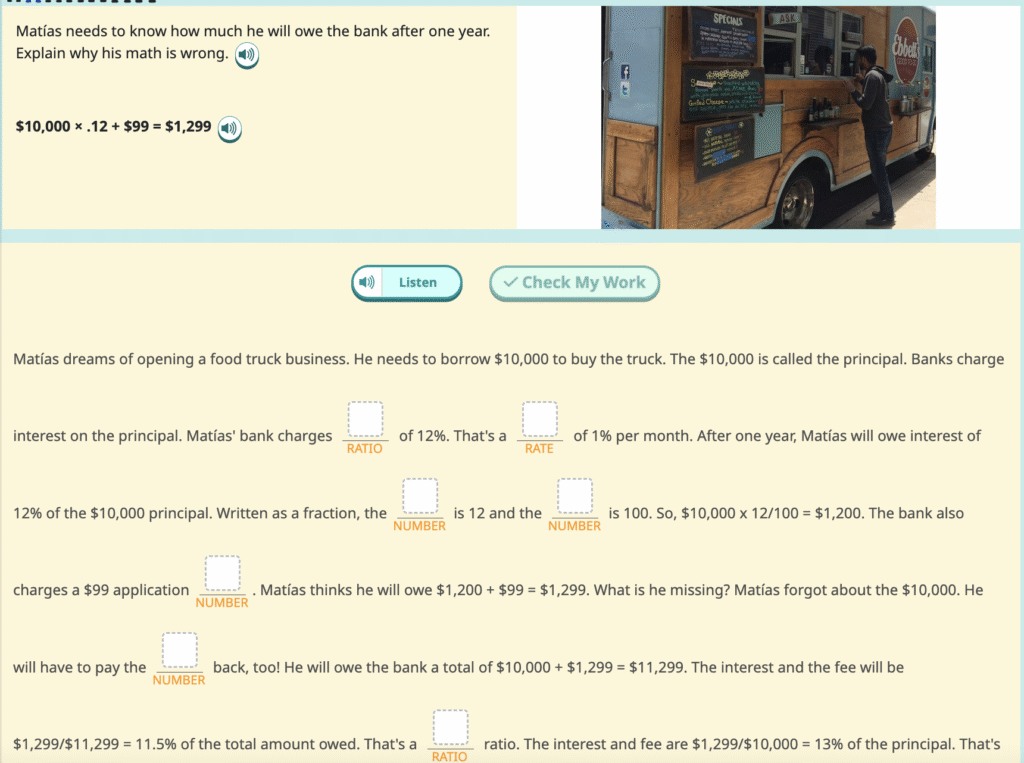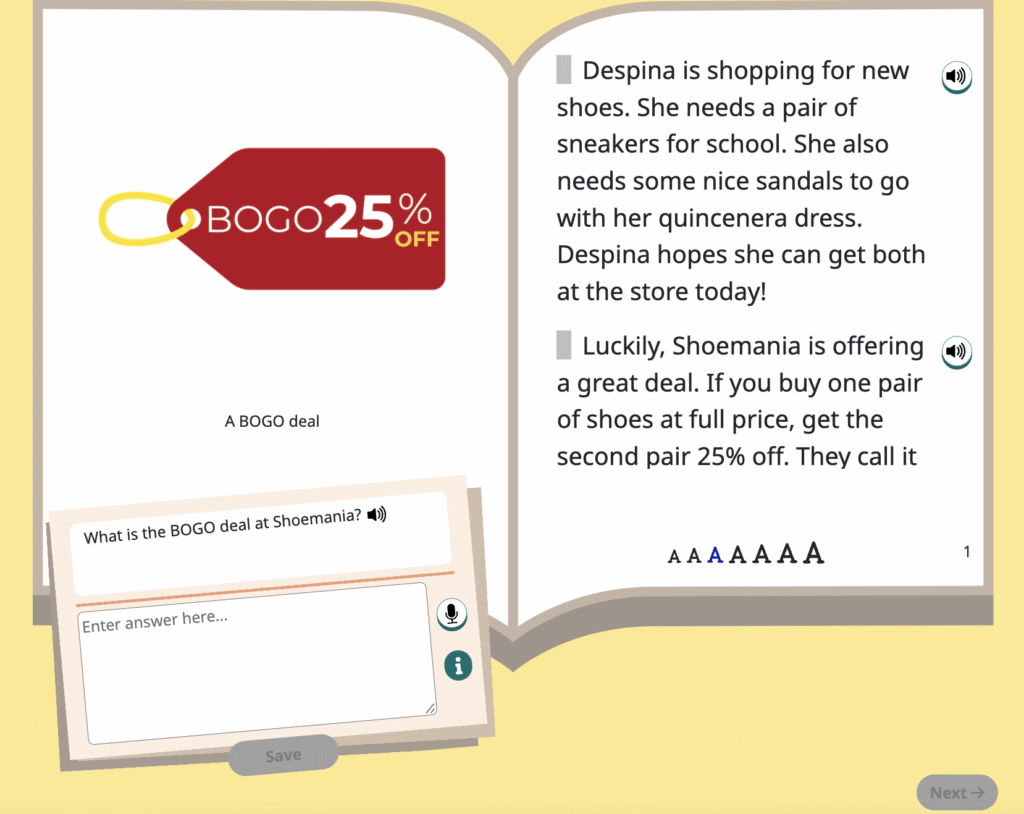Overview
Implementing real-world math examples and tasks in the classroom engages students in authentic math practices, preparing them for higher education and career opportunities in the mathematics and STEM fields.
Communication Modes Used by this Strategy
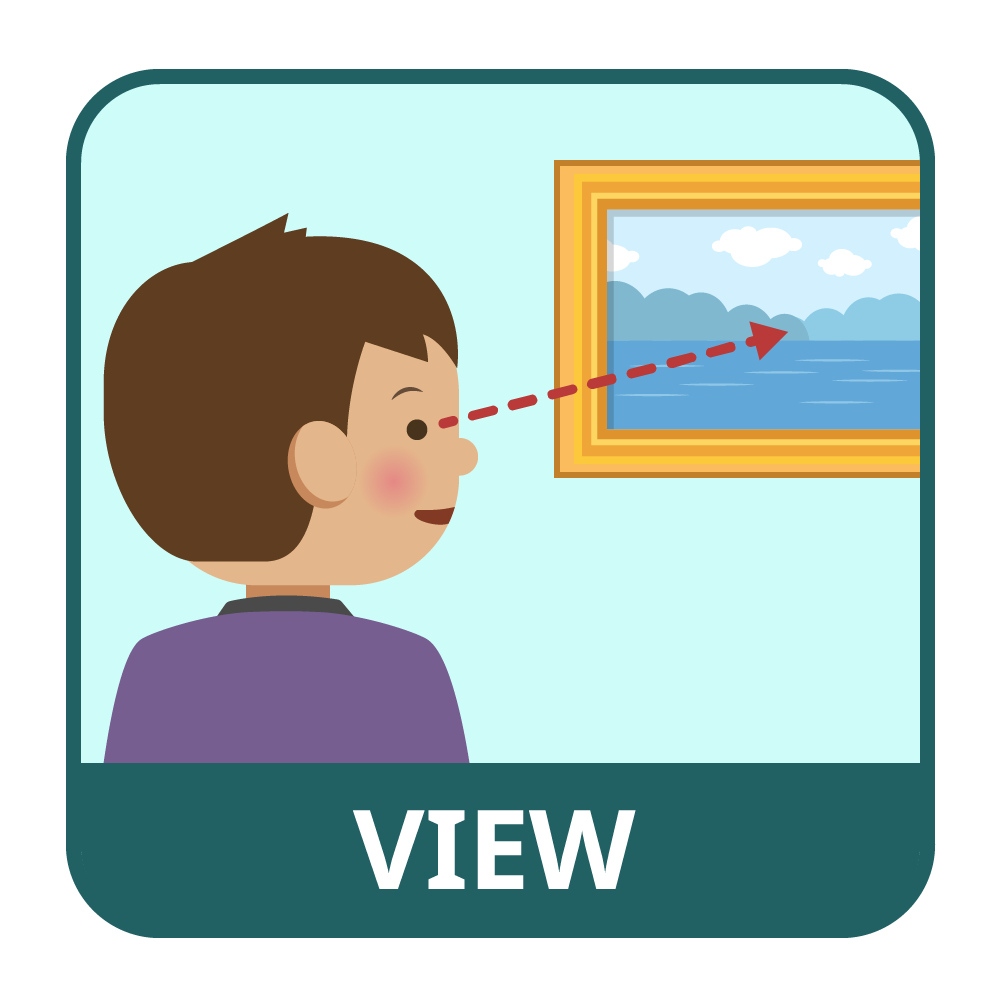
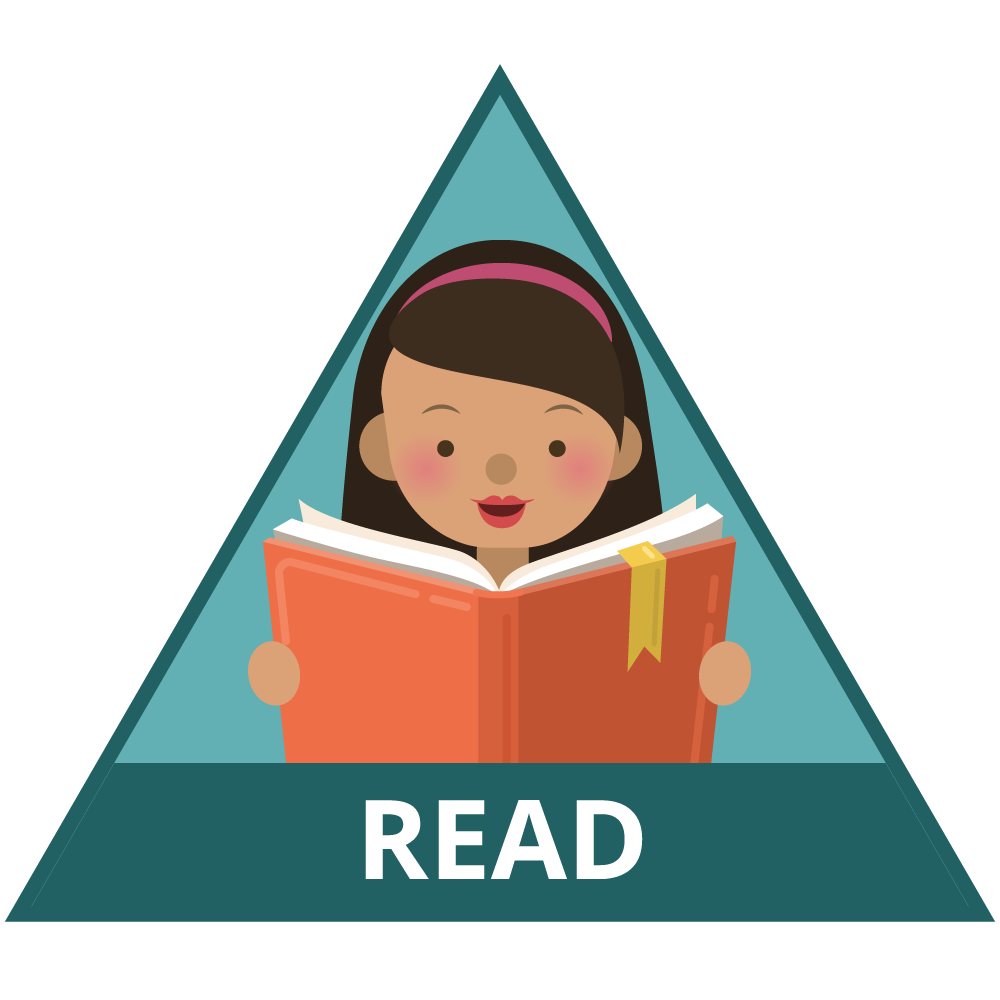
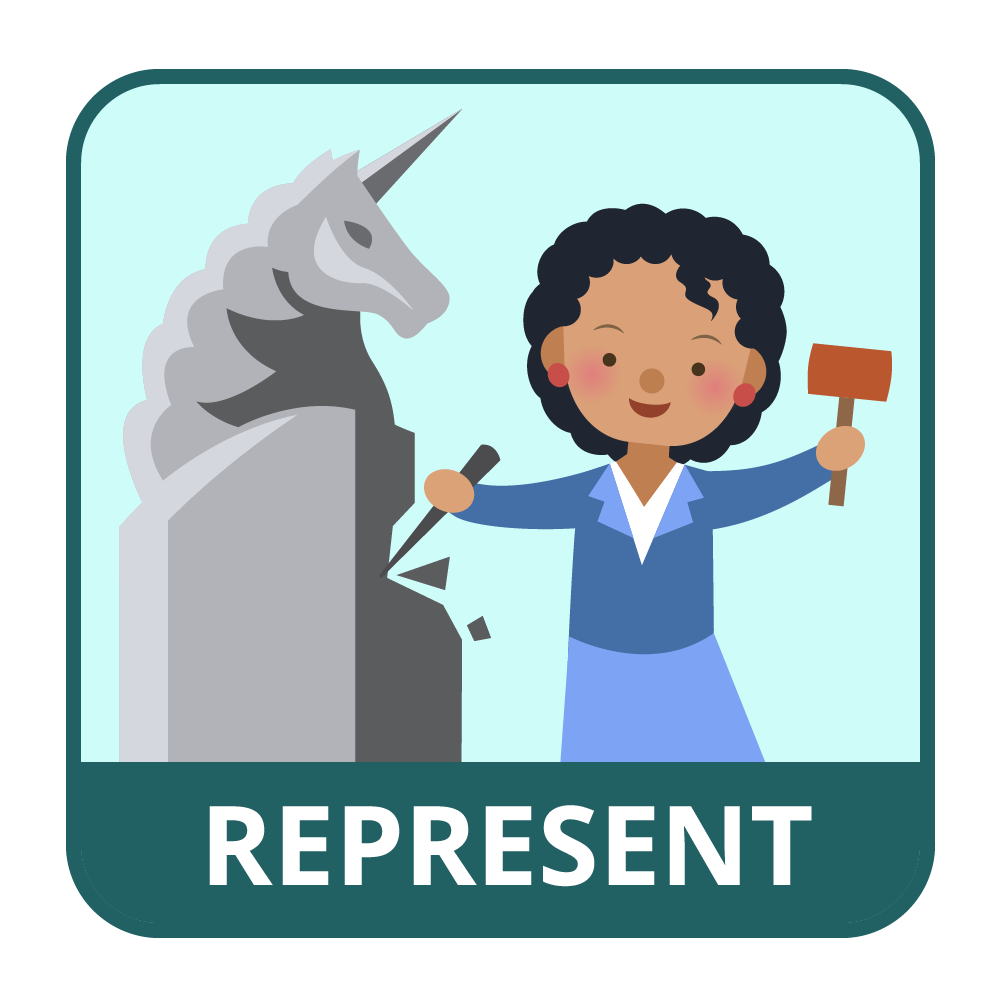
The Learning Benefits
- When students see relevance in the content they are studying, it increases their motivation.
- Students are more likely to be engaged by problems and projects they can related to a real situation or lived experience. This also encourages more productive classroom math discourse among peers.
Classroom Tactics
- Start by learning about students’ interests and lived experiences that could relate to the content. Then think about how to incorporate them into a math problem or project.
- To make this strategy effective, connect the content to places, people, objects, situations, or cultural contexts that are familiar to or meaningful for your students so that the connections are truly real-world.
- Consider having students co-design activities that encourage them to apply math in contexts outside of the math classroom.
How Speak Agent Makes It Better
Virtually every story-based activity in Speak Agent explores a real-world context. Some stories explore aspirations, like a young man who wants to start a food truck business. Others cover topics such as careers, family history, sports, current events, hobbies, role-playing, adventures, shopping, and financial literacy—like how to measure a TV screen size or use a bank account. All of these stories closely integrate with the classroom curriculum.
In addition, many activities in Speak Agent provide an authentic purpose by having students write or create works for their peers. For example, Math Puzzle Maker lets students make a problem for classmates to solve.
Real-World Math Packs
These activities help students make connections to real-world places, objects, and situations. The name of the digital lesson in Speak Agent that the activity goes with is listed below.
- Number Lines and Coordinate Planes (Math 6)
- Probability Trees (Math 7)
- Calculating Volume (Math 7 Honors or Math 8)
- Pythagorean Theorem (Math 8)
- Linear Functions (Math 8 & Algebra I)
When you’re done with each Real-World Math activity, please see this webpage for the answer keys.
Related Content
- Strategy: Word Walls
- Strategy: Multiple Visual Representations
- Article: What Can We Do About Declining Math Scores?
- Article: Language Strategies Benefit All Students

